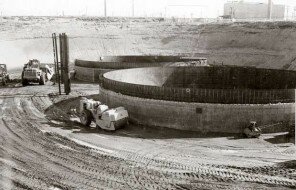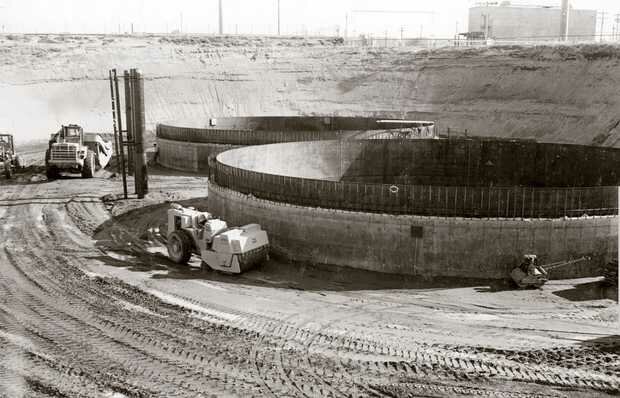
The news out of Hanford, Washington, is not good. A 42-year-old, double-walled-for-safety holding tank (the Fonzarelli-esque AY-102), is not quite full of 857,000 gallons of waste, in radioactive and toxic chemical flavors. A radioactive “mound 2 feet by 3 feet by 8 inches” has been discovered between the inner and outer hulls, and it is suspected that it leaked from inside the tank.
But don’t jump to conclusions! The radioactive materials could have come from somewhere else. Pipes, maybe. Relieved yet?
You can read all about it via a sort of news-organization connecting flight — a Los Angeles Times story reprinted in the Seattle Times — or at Crosscut.
The Tri-City Herald cuts to the chase: “This is fixed contamination on the floor. There is no liquid. There is no vapor,” the newspaper quotes Tom Fletcher, the Department of Energy assistant manager of the tank farms, saying. So unless rabbits get into it, it’s not going anywhere.
But we’re not doomed because of this news. We’re doomed because this is news. “A” leak? Let’s return to Crosscut to re-establish context for this story:
The tank is one of 177 underground tanks that Hanford currently uses to store its 53 million gallons of radioactive fluids, sludges and gunk. One hundred forty nine of these are single-shell tanks, at least 67 of which are already suspected of leaking at least 1 million gallons of nuclear waste into the ground since the 1990s. Waste that is likely seeping slowly toward the Columbia River.
Which do you think you should be more worried about? A mound of dried sludge in a tank or one million gallons that’s already leaked into the ground? Where is it? How far has it gotten toward the Columbia River? (Department of Ecology: “If we do nothing to address the existing problems or to clean up the waste in the tanks, some of the contaminants could reach the Columbia River in the next few decades. Other contamination may take more than a thousand years to migrate to the river. A number of contaminants such as tritium, chromium, nitrate, and strontium-90 have already entered the river from activities that took place on Hanford.”)
How much is “some” of 53 million gallons? That seems like it would be newsworthy.
Or again, for context, should you be more concerned about a possible inner hull breach in a double-hulled tank, or is it more alarming that “of Hanford’s 149 single-shell waste tanks, just seven have been cleared to Washington state’s standards.” Thanks to a 2003 analysis of AY-102’s contents (pdf), you can get an idea of just how highly radioactive the bomb-making leftovers are, and how water soluble.
Because Hanford is too large a problem to deal with, we can’t even talk about it. Everyone looks the other way and pretends that the government has this under control, when it clearly does not, and has not been given the resources necessary to respond commensurately.
